Oil vs. Acrylic – Guide to Choosing the Best Paint for You
When asked what the best paint medium is, people will answer based on their own experiences and preferences. Many prefer using acrylics because they are safer and dry more quickly, where others prefer oils because of their durability and the great textures achieved. Whatever your preference, in this article we are going to discuss the benefits and differences between acrylic and oil paints as well as what each one is best suited to.
Table of Contents
Getting to Know Your Paints
Before starting with any new medium, we need to look at what makes them unique. What sets apart your medium from the others? Why would you use it as opposed to a different one? Well, in this case, there are a few differences and benefits to both oils and acrylic paints. Below, we will explore each medium.

What Is Oil Paint?
The first primary difference that sets oils apart from other mediums is their consistency and texture. Oil paints are very thick and well, oily. They are made with binding agents, color pigments, and an oil base. Depending on your chosen brand the base may differ, but usually, it is a natural oil such as linseed or safflower. This is what gives oil paints their smooth and creamy consistency, making them ideal for different surfaces and projects.
The oil base is also what keeps oils wet for longer. Artists who enjoy taking their time and focusing on attention to detail usually love this medium. Oil paints are also wonderful for using different techniques and paint mediums. Painting oil over acrylic is also an option to add more layers and texture to your work.
The downside with oils is of course the chemicals involved. When working with oils, you do need to make use of a paint medium or thinner. These add fluidity to your paints, making them more workable as well as adding a protective gloss or sheen. Most oil paint mediums are solvents and are toxic, which means they can be harmful to the skin, eyes, and airways.
For this reason, many choose to wear gloves or even a mask when working with these strong chemical solvents and fumes. There are also safer medium options such as natural painting oils that can be used instead of turpentine and other paint strippers and thinners. Oils are also a messier medium, given that they cannot be cleaned up with soap and water. If oils splash onto your clothing or other fabrics, they are likely to stain.
These oil paint mediums can be used to slow down the drying time, speed it up, or to add texture and work as a sealant. They are also used to clean your paintbrushes and protect them from damage. There are so many options when working with oil paints, you just need to find the right one for you.
Another important tip to remember is that oils take around six months to dry completely once you are done painting. Only then can they be framed or coated with a sealant or varnish.
What Is Oil Paint Used For?
Oil paints are primarily used on canvas or thicker boards, but they can also be used on wood, certain metals, and ceramics. Because of their oily base, these paints work best when using a primer as a base coat. This assists your oils in better adhering to the surface, giving you a longer-lasting paint job.
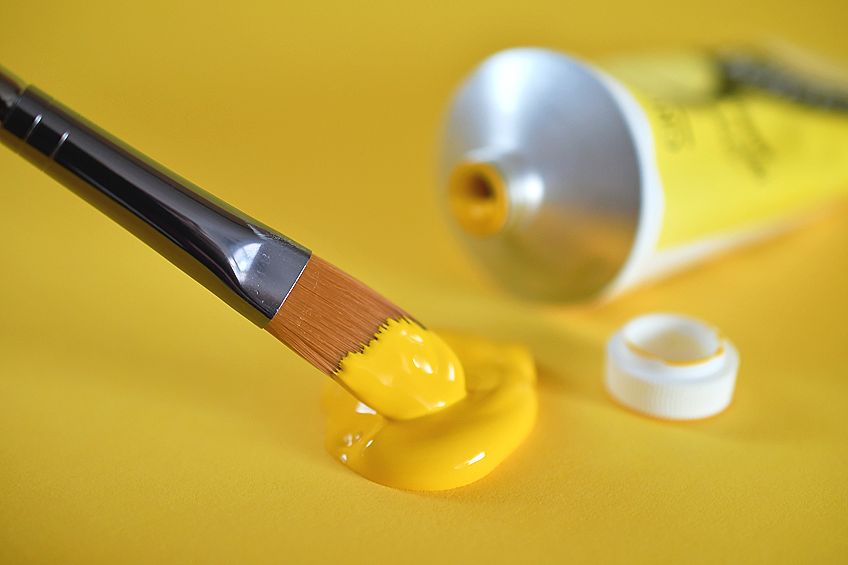
What Is Acrylic Paint?
Acrylics are made much the same way as oils except without the oil base. If they are not oil-based, is acrylic paint water-based? Yes, they are and therefore they are also much safer to use. One of the many benefits of working with acrylics is that you can still achieve the same bright colors and sometimes even the same techniques, but without the long wait for your art to dry.
For this reason, most portrait painters would not use acrylics. When you are painting something such as a portrait, which has so many layers, shadows, and details, acrylics would dry too quickly. Oils would then be your best paint option.
Using acrylic mediums can also enhance color mixing and blending techniques, making your paints move as oils would. Certain acrylic paint mediums will slow down your dry time if you are working on a larger project. Most acrylics can also be reactivated and worked on long after they are dry by using a little water or an acrylic paint medium. The liquids will allow the paint to become workable, and you can then add more color or layers.
When using acrylics, it is important to use a fixative or sealant on them to prevent your paint chipping and peeling in the future. There are acrylic-specific sealants or varnish options in different options, such as matte or super gloss to choose from. The best part about using acrylic paints is that they come off very easily. By using some soapy water, you can wipe up or wash out any painting accidents.
What Is Acrylic Paint Used For?
Acrylics can be used for painting and different craft projects. Because they dry so quickly, acrylics are suitable for use on paper, canvas, wood, glass, and even ceramics. If you plan on doing an outdoor project, be sure to get a specialty outdoor acrylic paint, as these will have better longevity against outside conditions.
Now that we know the main differences in using acrylic vs. oil paints, we can take a look at the benefits of each in summary.
Oil Paint vs. Acrylic Paint
For beginners starting out, acrylics are the perfect medium. Less mess, easy to use, and quick to dry. Once you have more experience, you can then move onto oil paints or even combine the two by painting oils over your acrylics to add shine and texture.
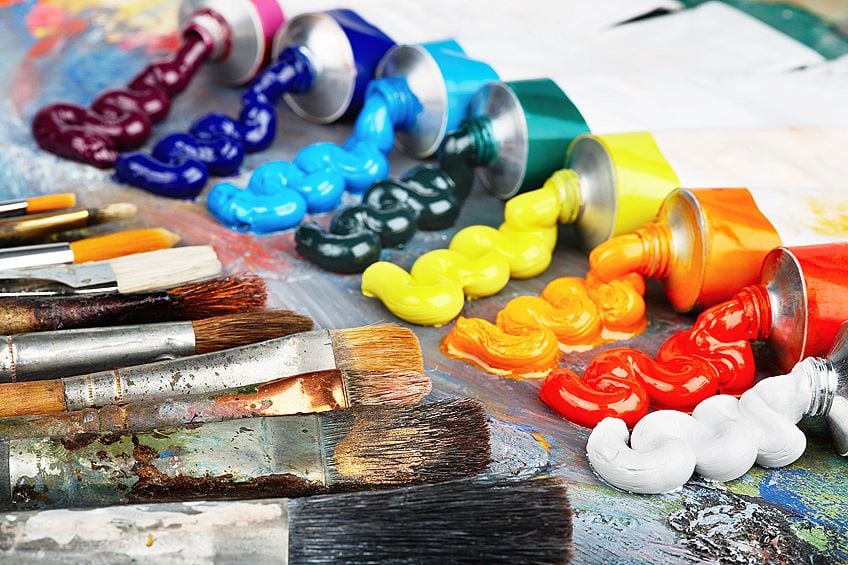
Drying Time
As we established already, oils take far longer to dry than their water-based counterparts. This makes them the go-to option for larger pieces that require more work, or for more detailed paintings that make use of technique and detail. When all you have is time, then oils are the obvious go-to. However, if working on a deadline or a quicker project, using oils would be very frustrating and the chances of a wet painting being damaged are higher.
Both acrylics and oils have their own techniques as well as their own paint mediums. These will assist with drying time, whether you would like to slow things down or speed them up. There are options available specific to each painting medium.
Blending and Mixing Colors
If are looking to try your hand at color mixing and blending, then oils are easier to do this with. Because they take so much longer to dry, oils are easy to work with and are more flexible. They can be worked on and layered pretty much until you are happy with them.
Oils’ blending capabilities are due to their oil base and fewer binding agents that are used in its make-up. Because they take so long to dry, oil paints retain moisture and glide easily over your canvas, providing very easy color mixing and blending opportunities.
Using acrylic for mixing colors is of course a bit harder unless you can do so quickly. It can be helpful to keep some water in a spray bottle while painting to re-wet your paint should it start to dry out. This will make it easier to work and mix on your canvas. Using too much water, however, will turn your acrylics into watercolor.
Cleaning Your Tools
The thought of cleaning your paintbrushes is not very exciting, but it is a vital step to their long-term maintenance and durability. Paintbrushes may not always be the most expensive resource, but good brushes should be looked after, especially when working with oils. Oil paints and oil paint mediums contain chemicals that can harm or damage your brush bristles. Using water alone will not be enough to clean up oil paint.
Usually, the best way to clean your oil or acrylic paintbrushes is to first mix your brush in a small bit of oil-based or acrylic medium. Linseed oil or other natural oil mediums will condition your oil brushes as well as seep in deep inside the bristles to loosen the paint in those hard-to-reach places. Then, you want to wipe your brush gently with a paper towel.
Next, mix the brush in a small amount of water and gently wipe and rinse again, until no more color comes off. You can also use an artist soap after cleaning with your oil medium and wetting your brush. Artist soaps are very helpful in removing the stain your paints can leave behind on your lighter colored bristles without stripping them in the process.
Of course, you can also use a chemical or solvent paint medium if you prefer instead of an oil one. These toxic chemicals often harm your paintbrushes, however, and can lead to hair loss from your bristles, dry brushes, or faded brushes. Paint thinners can also eat away at your brush handles if you leave them in the solution for too long.
The Finish of Your Painting
When comparing these paint mediums, we also need to take the finish of your painting into account. Acrylics provide a flatter, more matte finish. If you prefer a gloss or shine, you will need to use a separate product to achieve this. Oils, on the other hand, offer a high gloss and leave a noticeably smooth finish naturally. If you prefer your oils to be more opaque or even to have a matte look, there are paint mediums for that too!
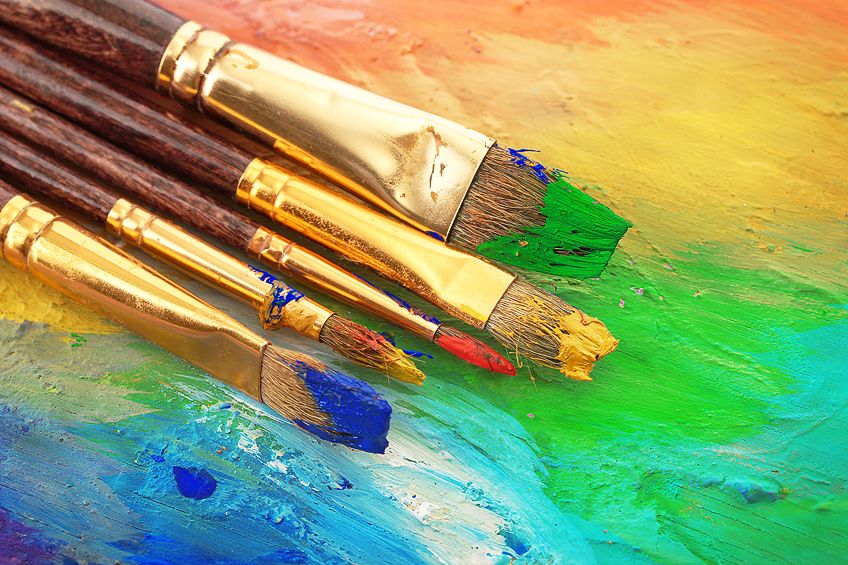
Durability and Lightfastness
Because oil and acrylic paints both contain the same color pigments, they generally share the same lightfast qualities. A lightfastness rating determines how your painting will be affected by light and sunlight. Most suppliers currently have a lightfastness rating on their individual paint colors, indicating each paint rating. The quality of your lightfastness rating will be benefited by a sealant.
The durability of oils is obvious, with many paintings from famous oil artists still on display today in amazing condition, this medium has a high longevity factor. Acrylics also last a long time but not being water-resistant, they are affected by weather and moisture in the air. Both mediums will have an increased lifespan and lightfastness if coated with a sealant.
Color Quality
Your color quality is a key factor in determining the right paint medium and option for you. Depending on the brand, skill level, and cos,t you can get many quality paint sets for both acrylic and oil paints without spending a fortune. The thing to remember is that acrylic colors are quite dense and flat, meaning that they often dry darker than expected. Oils are thick, opaque, and glossy, making the blending and color mixing opportunities endless.
Cost
Let us face it, the cost is always an important factor when making a purchase or starting a new hobby. Being a beginner or student artist does not mean that you need to spend a fortune to get quality paints. Many brands offer student or entry-level painting sets that are perfect for beginners.
When using oils, there are also the added expenses of painting tools and solvents, which can become costly. Oil brushes can also be more expensive, and then you will also need to use a primed canvas or purchase a primer to apply yourself for the best results. There are many small details when working with oil paints that one must consider. Using an acrylic option is simpler and using a painting medium is optional, as water can be used as a medium too.
The Verdict
Based on what we have discussed today, both mediums can be used by beginners, but acrylics are the easier choice. When initially learning to paint, acrylics allow you to understand and explore your colors, techniques, and painting style. Though they are quick to dry, you now know how to combat that issue with the use of water or painting mediums.
Oils for beginners are often avoided due to the price of the required materials. But they are great for learning to blend, adding tones and depth, and mixing colors. Oils allow for longer use of time while painting, but will take up to six months to dry.
Next, we can look at some great product recommendations for acrylic vs. oil paint.
Acrylic vs. Oil Paint Brands
Here, we will look at different oil and acrylic paints from trusted brands. This way, you can make an informed decision on your paint medium and the brand that works for you.
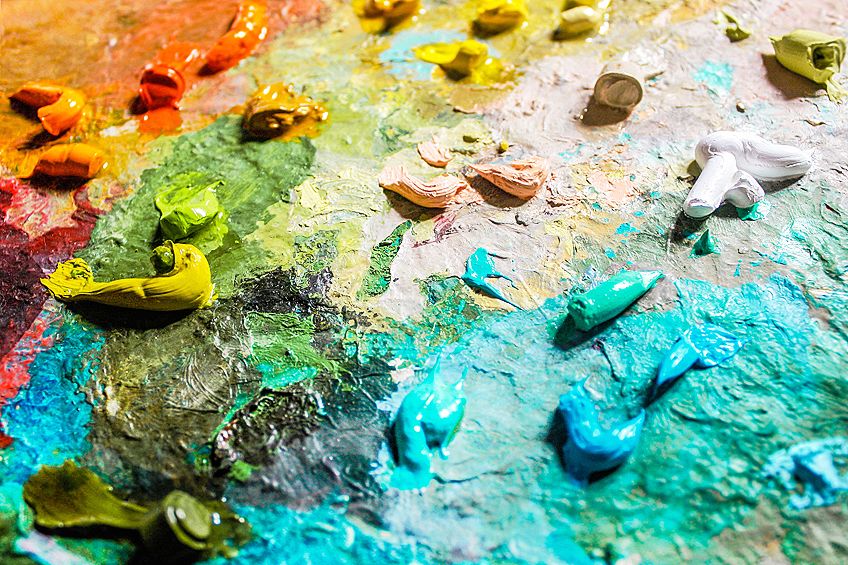
Best Oil Paint Set: ROSEART Premium Oil Paint Set
The RoseArt Premium Oil Paint Set, boasting 24 vibrant colors, is a quintessential choice for artists of all levels, from casual dabblers to seasoned professionals. Each hue is crafted with maximum strength pigments, ensuring intense color payoff and remarkable longevity on canvas. Whether you’re exploring your creativity or executing intricate masterpieces, this versatile set provides the perfect spectrum to bring your artistic visions to life.
- 24 vibrant colors
- Maximum pigmentation for intense color payoff
- Suitable for artists of all levels, from beginner to professional
PROS
- The set offers 24 rich and vibrant colors
- Maximum pigmentation
- Suitable for artists of all levels
CONS
- Packaging issues with difficulty in sealing tubes properly
Best Acrylic Paint Set: WINSOR & NEWTON Galeria Acrylic Paint Set
This set of 10 basic acrylic colors by Winsor and Newton is perfect for a beginner. This range contains high pigment levels and has been specially formulated to ensure good coverage and a thick buttery texture, giving you added workability and room for layering.
Winsor and Newton have also added a satin finish to their Galeria acrylics range, offering enhanced colors and depth. If you are looking for more colors, they do have bigger sets available within this range. This set is ideal for those wanting to learn with acrylics while achieving the same textures and longer drying time that oils would provide.
- Acrylic paints that can give you professional looking results
- Excellent color brilliance, high pigment, great opacity, and more
- Offers a good buttey consistency for quick and easy coverage
PROS
- Great for beginners
- Thick and buttery consistency
- Easy to use
- Easy to blend with and mix colors
- Can use on different surfaces
- Comes in different set sizes
CONS
- Only 10 colors – some colors you want may be excluded
- Bigger sets will be more expensive
So, now you have a quality and affordable recommendation for each paint medium. Before you stock up on supplies, you may be interested in some painting tips we have for each medium below.
Painting Tips
It is always helpful to do your research and be prepared when taking on a new project. Aside from the basics such as materials, there are a few tips and tricks you may learn that could be useful in the future. Take a look below for some useful tips when using acrylics and oil paints.

Tips for Working with Acrylic Paints
- When starting, it may not be necessary to purchase an acrylic medium. Water will do in the interim. Using a spray bottle is the easiest way in which to use your water without making a mess or over-adding. Spritzing your paint palette, surface, or wet paints will allow them to retain their moisture and stay liquid.
- Painting in steps could be useful to prevent your paint from drying before you are done. When using acrylics, try starting with two or three colors at a time. This way, you can finish each element without rushing.
- When cleaning your brushes, you can use a natural or oil-based soap to condition and protect your bristles.
- Always apply a sealant or fixative to your paintings so as to ensure longevity.
Tips for Working with Oil Paints
- When using oils, it is best to use an oil painting medium. This allows one to achieve seamless blending, shading, and color mixing capabilities.
- When painting layers with oils, it is important to let the bottom layer dry completely before adding a new one. Adding wet colors on top of each other will change the pigments.
- Your oil painting should always start with a thinner layer to build upon, as in underpainting. This should consist of equal parts of paint, oil medium, and solvent. As you move onto each new layer, you will decrease your solvent until by the third you are no longer using any. This way, your top layers are thicker and bolder than the initial ones.
- Should you be painting for more than a day, you can keep your brushes moist by leaving them in an oil medium overnight. The next day, wipe them off and start painting. Your brushes will still be soft and flexible.
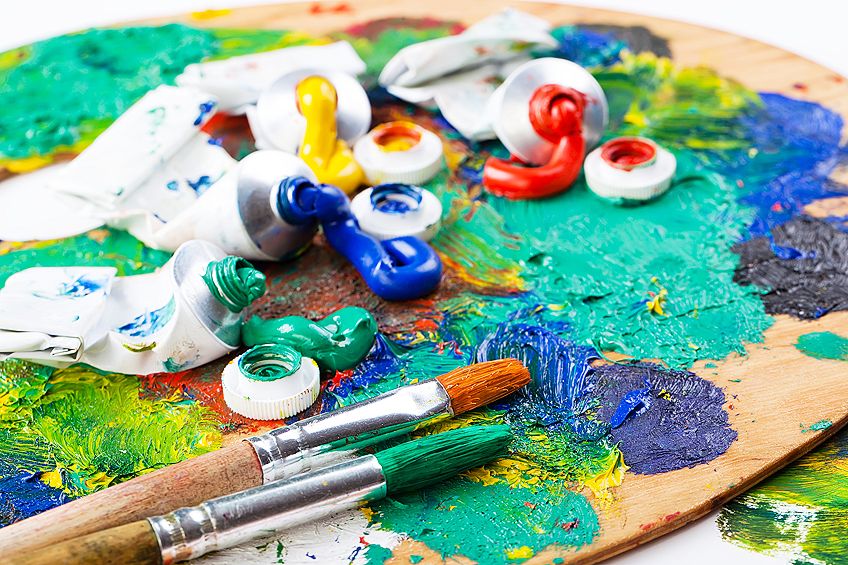
Frequently Asked Questions
Is Acrylic Paint Water-Based?
Yes, acrylics are water-based and therefore can be used with water. This also makes them easy to use and to clean up, as they do not stain.
What Is the difference Between Acrylic and Oil Paint?
Acrylic paints are water-based, making them quick to dry and safe to use. Oil paints are oil-based, making them very slow to dry and often toxic. Although these two paint mediums often share the same color pigments, they work quite differently.
What Is Acrylic Paint Used For?
Acrylics are mostly used for crafts and painting. They are safe for children and are an easy starting medium for beginners looking to learn how to paint. Acrylics can be used on paper, canvas, glass, ceramics, and various other surfaces.
In 2005, Charlene completed her Wellness Diplomas in Therapeutic Aromatherapy and Reflexology from the International School of Reflexology and Meridian Therapy. She worked for a company offering corporate wellness programs for a couple of years, before opening up her own therapy practice. It was in 2015 that a friend, who was a digital marketer, asked her to join her company as a content creator, and this is where she found her excitement for writing.
Since joining the content writing world, she has gained a lot of experience over the years writing on a diverse selection of topics, from beauty, health, wellness, travel, and more. Due to various circumstances, she had to close her therapy practice and is now a full-time freelance writer. Being a creative person, she could not pass up the opportunity to contribute to the Art in Context team, where is was in her element, writing about a variety of art and craft topics. Contributing articles for over three years now, her knowledge in this area has grown, and she has gotten to explore her creativity and improve her research and writing skills.
Charlene Lewis has been working for artincontext.org since the relaunch in 2020. She is an experienced writer and mainly focuses on the topics of color theory, painting and drawing.
Learn more about Charlene Lewis and the Art in Context Team.


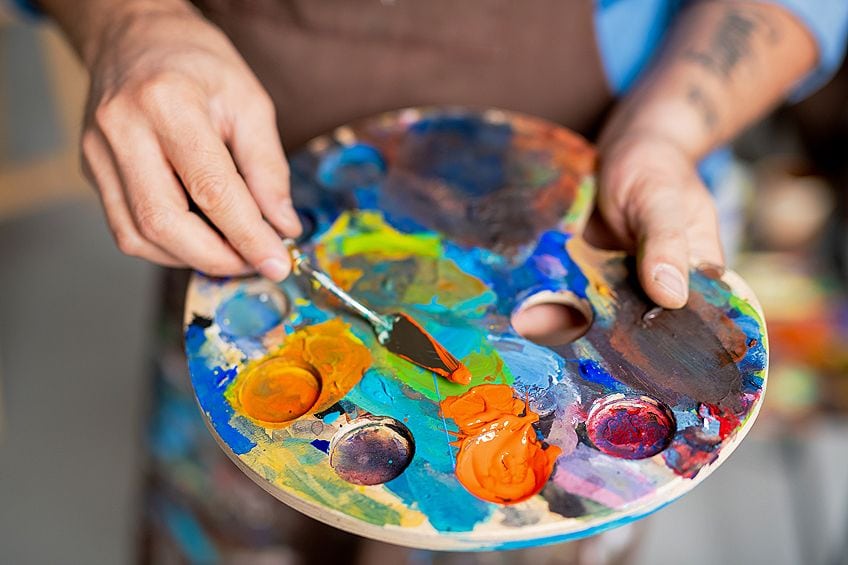









This guide is a lifesaver! As someone diving into the world of painting, I always wondered about the differences between acrylics and oils. The breakdown here is fantastic, especially for a beginner like me. I appreciate the straightforward comparison, from drying times to blending techniques. It’s like having a paint mentor guiding me through the basics. The product recommendations are the cherry on top, making it easier for me to decide where to start. Can’t wait to pick up my brushes armed with this knowledge!
Indeed, the topic is well explained. It provides practical tips and specific product recommendations